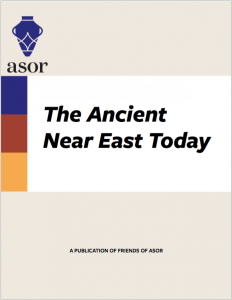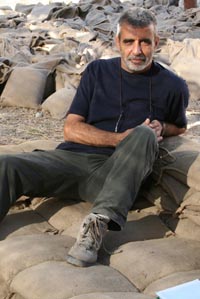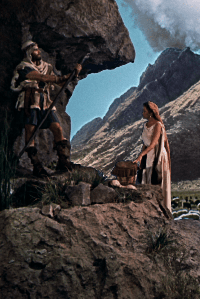

May 2016
Vol. 4, No. 5
Welcome to The Ancient Near East Today Vol. 4, No. 5! In this issue we go from the skies above Joshua’s battle with the Amorite kings, to fundamental questions of the Bible and history, with a stop to look at the most popular widescreen version of the Exodus.
Learn how to promote your dig or research with 5 easy tips from ASOR. Mark Chavalas looks at the texts behind the story of how Joshua stopped the moon and the sun. Next, we present the second part of Louis de Figueiredo’s interview with Israeli archaeologist Israel Finkelstein on the relationship between the Bible and archaeology. Then, Alex Joffe takes a look back at the iconic 1956 film The Ten Commandments and its uniquely American version of the Exodus. Finally, we present a video from the 2015 ASOR Annual Meeting on the journey of the Cyrus cylinder.
As always, we encourage you to send The Ancient Near East Today articles to family and friends, post links to Facebook and Twitter, and to be in touch with the editor. Remember, being a Friend of ASOR is free, so please spread the news!
 Does the Bible Claim that the Sun and Moon stopped in their Tracks?
Does the Bible Claim that the Sun and Moon stopped in their Tracks?
By Mark Chavalas
The sun and moon have been in the news lately; Pastor John Hagee has claimed that recent blood moons (a popular phrase for a total lunar eclipse) have biblical significance of cataclysmic proportions concerning modern day Israel. A discussion of what the Bible actually says of the movement of heavenly bodies is therefore in order.
READ MORE
 The Role of Biblical Archaeology in Exegesis: An interview with Professor Israel Finkelstein, Part 2
The Role of Biblical Archaeology in Exegesis: An interview with Professor Israel Finkelstein, Part 2
By Louis C. de Figueiredo
This is part 2 in the two part interview with Professor Israel Finkelstein. Please click here to read, “The Role of Biblical Archaeology in Exegesis: An interview with Professor Israel Finkelstein, Part 1.”
READ MORE
 “So it is Written, So it Shall be Done:” The Ten Commandments at 60
“So it is Written, So it Shall be Done:” The Ten Commandments at 60
By Alex Joffe
Who was Moses and what was the Exodus? The Book of Exodus contains 40 chapters but the very human desire to express these narratives in imagery has been evident for millennia.
READ MORE



